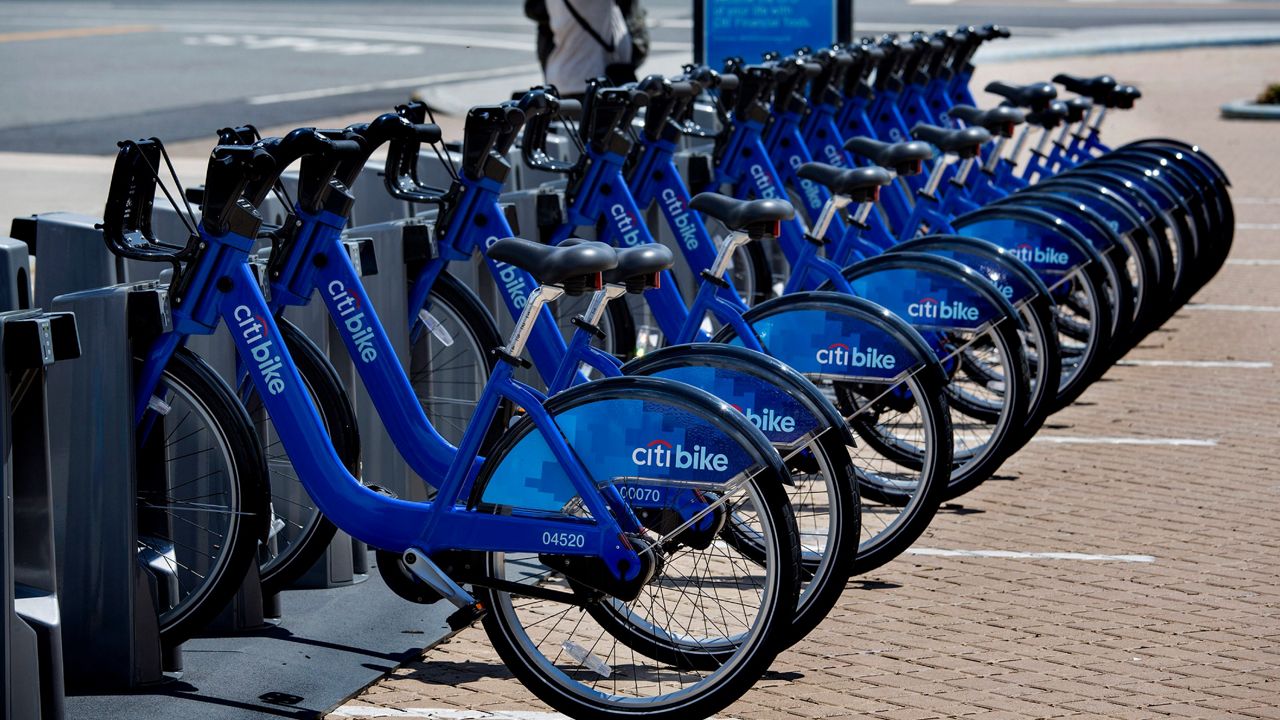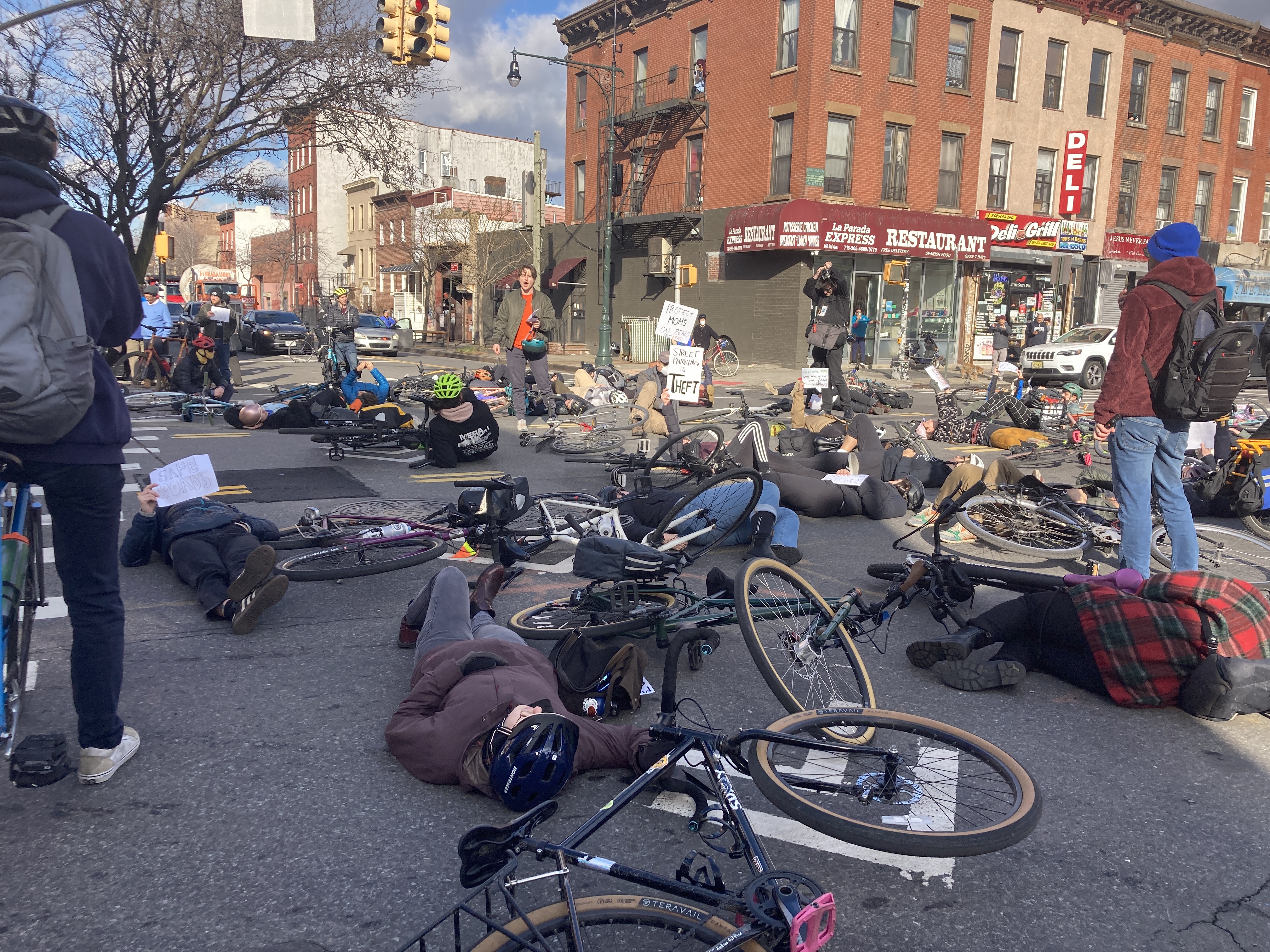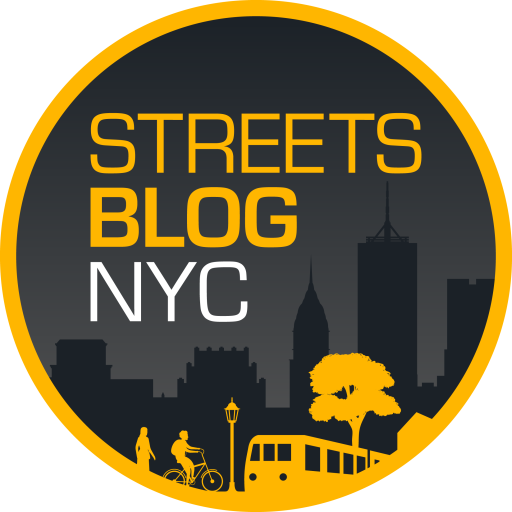You are using an out of date browser. It may not display this or other websites correctly.
You should upgrade or use an alternative browser.
You should upgrade or use an alternative browser.
Eric Adams bikes to work on second day in office: ‘On the road again!’ (A.K.A The NY Bike thread)
- Thread starter bnew
- Start date
More options
Who Replied?It is kinda shytty that you can't CitiBikr in certain neighborhoods
Only people Ive ever seen cycling to work were white. This Adams strikes me as one too.
I see black folks on bikes and lots of scooters too.
I've also noticed an uptick in black moped riders which is something I always associated with asians.
ExodusNirvana
Change is inevitable...
Doordash and UberEats hires everyone bruhI see black folks on bikes and lots of scooters too.
I've also noticed an uptick in black moped riders which is something I always associated with asians.
And the weed delivery guy got places to be
Most people are neither riding bikes or using mopeds in NYC, nor do they have any interest in doing so
Last edited:


Bicycles are lined up at a dock and lock station at the Brooklyn Navy Yards on May 12, 2013. (AP Photo/Craig Ruttle)
TRANSIT
MTA to install more bike racks across city
BY DAVID LAZAR NEW YORK CITYPUBLISHED 6:15 PM ET JAN. 11, 2023
The MTA is working on a plan that will add bike racks to the front of buses and outside of train stations, according to a statement released Wednesday.
Front-of-bus bike racks will be installed on three Select Bus Service routes that span four boroughs — the M60 SBS, S79 SBS and the Q44 SBS.
In addition, the MTA will install bike racks near the entrances of the 37 subway stations that do not currently have bike parking. Approximately 68% of subway station entrances currently have a bike rack within 100 feet of the entrance, according to the MTA.
The MTA will also install bike racks at 18 suburban commuter rail stations — five Long Island Railroad stations and 13 Metro North stations — and enhance pathways at facilities operated by MTA Bridges and Tunnels.
MTA Chair and CEO Janno Lieber says the strategic action plan, which is called Extending Transit's Reach, will enable the MTA to attract new customers who use bikes, electric bikes and electric scooters.
"It's time for the MTA to fully embrace bicycle, pedestrian and micromobility access as we plan and expand New York's transit system," Lieber said. "Extending Transit’s Reach provides a framework to better integrate MTA subway, bus, and commuter rail service with the ways that New Yorkers are increasingly using to get around. It will enable the MTA to attract new riders to the system, and to harness increasingly popular modes of transportation to essentially expand the transit system."
The full plan can be found here.

Racks in Effect: City, MTA to Put Bike Parking at Dozens of Subway Stations
Transit officials described the move as a “real sea change” for New York cyclists that will install bicycle racks at 37 locations, placing racks on the front of some buses and more.

Bike, Pedestrian, and Micromobility Strategic Action Plan
The MTA is committed to making it easier for riders to access our system by walking, biking, and using other micromobility devices.
Station Access and Mobility
The MTA will make it easier for our riders to access transit facilities by expanding bike parking, as well as improving bike and pedestrian access and wayfinding.- We will partner with NYC DOT to install bike rack clusters at 37 subway stations that do not currently have bike parking within 100 feet of the station entrance
- We will install bike racks at 18 commuter rail stations throughout Metro-North and LIRR territories
Multimodal Integration
Seamless multimodal connections will make it easier and more convenient for MTA customers to use bikes or micromobility to access transit.- We currently have front-of-bus bike racks on the S53, S93, Q50, and Bx23 (crossing the Verrazzano-Narrows Bridge, the Whitestone Bridge, and connecting Co-op City to the 6 train). We will add these racks to new routes: the S79 SBS, Q44 SBS, and M60 SBS, crossing the Verrazzano-Narrows Bridge, the Whitestone Bridge, and the RFK Bridge, respectively.
- We will continue to work with NYC DOT and regional stakeholders on new locations for shared micromobility, such as bike-share and scooter-share, near public transit.
Safe Routes to Transit and Bridges
The MTA's seven bridges serve as critical connections between boroughs. Our long-term goal is to provide safe, convenient access for cyclists and pedestrians on these bridges where possible. One bridge currently has a shared-use path, while three currently have pedestrian paths. Five of these bridges have bus routes providing interborough connections.- In October 2022, we opened the shared-use path on the Cross Bay Veterans Memorial Bridge to cyclists, pedestrians, and micromobility users.
- A shared-use path for the Henry Hudson Bridge is expected to be completed by 2024.
- We will construct three new ADA-compliant ramps on the RFK Bridge to connect Manhattan, the Bronx, and Queens, to be completed in 2025.
Demand Management
The MTA wants to encourage people to walk, bike, or use micromobility to access our network. This will help decrease reliance on cars and lower demand for parking facilities.- The MTA Board adopted a First- and Last-Mile Policy in July 2022 that allows us to work directly with stakeholders on improving commuter rail station access via walking, biking, ride-sharing, or public transit
- We are partnering with 10 communities in Metro-North Railroad and LIRR territories on pilot programs to design first- and last-mile improvements at commuter rail stations, which can serve as models and help communities promote walking and biking as ways to access our stations
Policy, Program Administration, and Performance Management
The MTA will dedicate more resources to implementing these strategies and will organize new structures to coordinate this work systemwide as well as with external partners, such as NYC DOT and regional stakeholders.- The MTA will expand its Transit-Oriented Development and Station Area Planning team with a coordinator role that will support the ongoing implementation of this plan’s strategies.
- We will convene an internal Bicycle, Pedestrian, and Micromobility Committee to meet regularly.

FINALLY: DOT Says it Will Redesign Unprotected Portion of Ninth St. as Cyclists Stage 'Die-In' - Streetsblog New York City
Too little, too late. "The city dropped the ball," said one friend of killed cyclist Sarah Schick. "And now we have to be here for our friend."
 nyc.streetsblog.org
nyc.streetsblog.org
FINALLY: DOT Says it Will Redesign Unprotected Portion of Ninth St. as Cyclists Stage ‘Die-In’

Cyclists stage a "die-in" on Friday morning on Ninth Street, 10 days after 37-year-old Sarah Schick was killed on the cooridor. Photo: Julianne Cuba
ozens of cyclists staged a “die-in” on Friday at the dangerous unprotected stretch of Ninth Street where a truck driver killed a woman cyclist 10 days ago, an event that culminated in a promise by the Department of Transportation to redesign that portion of the roadway nearly two decades after its dangerous conditions were first observed by the agency.
After cyclists laid in the street to protest what they called the city’s failure to keep people like 37-year-old Sarah Schick safe, DOT Commissioner Ydanis Rodriguez said the city will unveil in the next few months a redesign of the unprotected portion west of Third Avenue. The city will also immediately change the signal timing to give pedestrians and cyclists time to cross before cars and trucks get a green light, a timing known as a Leading Pedestrian Interval.
“We are here to say that we are working 24/7 to change the culture to redesign the street, to hear from the community,” said Rodriguez, who likened the preventability of traffic violence to gun violence. “We are making immediate signal adjustments to improve safety in this area. We are also committed to delivering a design solution that makes this stretch of Ninth Street safer for cyclists. We will come to the local community board with a proposal.”
The agency could not yet say what exactly the changes will look like, but said that it has an “expanded toolbox” from which to pull from.

Schick, a mother of two, died on Jan. 10 at about 7:20 a.m. after she was overtaken and run over by the 39-year-old driver of a 2022 Freightliner box truck as she headed east on Ninth Street near Second Avenue. She died on the scene, according to police, who have not issued any summonses to the driver.
Advocates say her death could have been prevented had the city followed through on redesigning the entirety of Ninth Street, not just between Prospect Park West and Third Avenue as it did in 2019, despite pressure at the time from Community Board 6 to extend the improvements to Smith Street.
Schick’s death is now the sixth in 18 years on Ninth Street. In 2004, 11-year-old Victor Flores and 10-year-old Juan Angel Estrada were struck and killed by a trucker on Ninth Street at Third Avenue, while walking home from school. Fourteen years later, Dorothy Bruns hit and killed 1-year-old Joshua Lew and 4-year-old Abigail Blumenstein. Blumenstein’s mother, actress Ruthie Ann Miles, who was injured in the crash, also later lost her unborn child.
At the time in 2018, advocates had met with DOT officials about the need to add safety measures to all of Ninth Street, not just between the park and Third Avenue. But DOT didn’t budge.
“We know that his corridor has ben unsafe for far too long and promises had been made after death after death almost the last 20 years,” said Council Member Shahana Hanif, who represents the area, standing alongside State Sen. Andrew Gounardes, Assembly Member Jo Ann Simon, and a representative from the office of newly elected Rep. Dan Goldman. “We are committed to holding the DOT to account to making sure this Ninth Street corridor is no longer known as an unsafe corridor.”
 DOT Commissioner Ydanis Rodriguez with pols, including Council Member Shahana Hanif, State Sen. Andrew Gounardes, and Assembly Member Jo Ann Simon. Photo: Julianne Cuba
DOT Commissioner Ydanis Rodriguez with pols, including Council Member Shahana Hanif, State Sen. Andrew Gounardes, and Assembly Member Jo Ann Simon. Photo: Julianne CubaAnd now, five years later, a close friend of Schick’s told community members and pols just how anguished he and her family are, especially after learning that the city could have done something to prevent his friend’s death.
“I want to thank you all for being here. We are devastated obviously,” said Juan De La Torre. “Nothing is going to bring us Sarah back. It’s been very hard times for the family and the close friends. What I’m learning here is this seems to be avoidable and the city just dropped the ball … and now we have to be here for our friend.”
